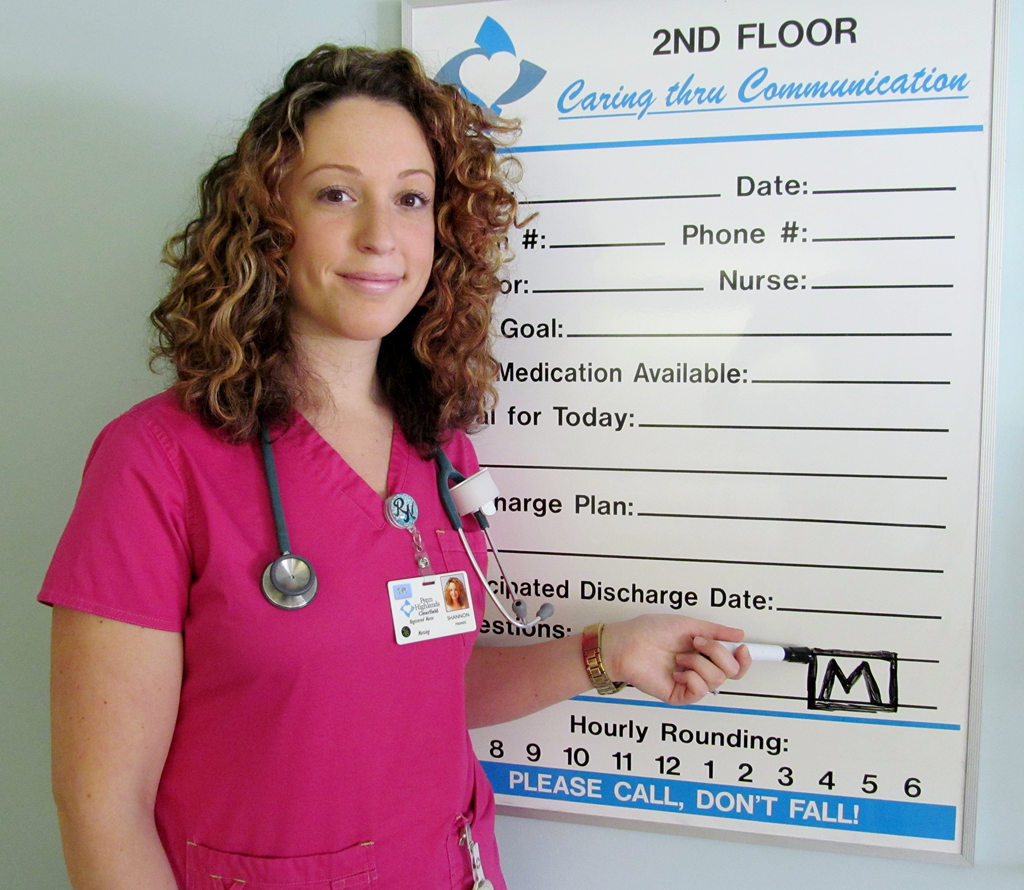
New Initiative Aims to Improve Patients’ Understanding of Medications
Penn Highlands Clearfield
Penn Highlands Clearfield is launching a new initiative called “M in a Box” to help patients admitted to the hospital have a better understanding of their medications. Shannon Maines, registered nurse, points to an “M” on a patient communication board. The “M” indicates to all clinical staff that the patient is on a new medication and prompts the staff member to reeducate the patient about its use.
One in five patients discharged from hospitals suffers an adverse event, according to the Agency for Healthcare Research and Quality. Of those adverse events, 72 percent are related to medications.
The good news is that by working as a team, healthcare providers and consumers can help decrease the chance of adverse events and reduce the risk of readmission to the hospital, according to Michelle Bennett, PharmD, director, Penn Highlands Clearfield Pharmacy.
“Penn Highlands Clearfield is committed to making sure our patients have the resources and tools they need to stay healthy after they are discharged from our hospital. Having a thorough understanding of their medications is an important part of that process,” stated Bennett.
The hospital has implemented a number of strategies over the years to improve patients’ understanding of their prescriptions. The latest is the “M in a Box” campaign, which is being spearheaded by Pharmacy staff and the Patient Experience Committee, and led by Bennett, Kate Baumgratz, R.N., director, medical/surgical unit, and Lisa Rorabaugh, R.N.C., director, patient safety and patient experience.
Here’s how the initiative works: When a new medication is ordered for an admitted patient, the patient‘s physician, nurse, pharmacist or other clinical staff will educate the patient and his or her family about when to take the medication, how much to take and possible side effects and interactions.
After this information is initially discussed with the patient, the staff member will write an “M” in the bottom right of the white communication board that is at the patient’s bedside.
The “M” on the board indicates to all clinical staff caring for the patient that the patient is on a new medication. Each time the medication is discussed with the patient, a line will be drawn around the “M” until the box is closed.
“This ensures that the patient has been educated at least five times about the new medication. During each conversation, our staff will give patients the opportunity to ask questions, and then will ask the patient to restate the information to make sure he or she truly understands,” Baumgratz said.
Further, Rorabaugh said, at discharge the patient and caregivers will receive instructions, both verbal and written. The discussion will include the physical condition of the patient before and after hospitalization; details of the types of care that will be needed; what activities he or she might need help with; information on medications and diet; what equipment might be needed, such as a wheelchair or oxygen; who will handle meal preparation, transportation and chores; and possibly referral to home health.
“Making sure our patients have a smooth transition home is important to us; we want them to have a solid understanding of what needs to be done for a successful recovery. We want to empower them with knowledge, especially how to take their medications properly for the most benefit,” Rorabaugh said.
